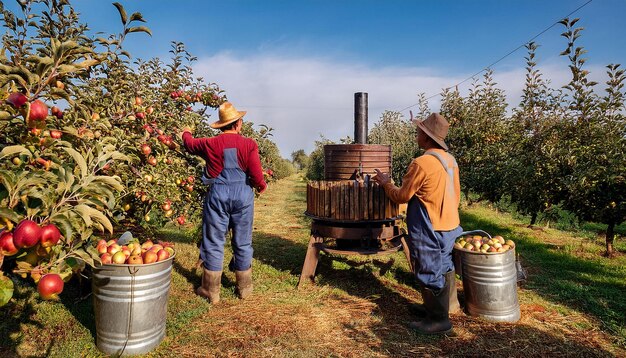Stewart Peak, located in Warner, New Hampshire, is a lesser-regarded but traditionally vast landmark. Its roots date lower again to the technology of the area’s early settlers and Indigenous peoples, and it has played a role in every Warner’s development and herbal history beyond. Here’s a deep dive into the records and cultural significance of Stewart Peak.
Indigenous Heritage and Early Settlement
Long earlier than European settlers arrived, the land around Stewart Peak was modified into inhabited by the Abenaki human beings. The Indigenous organizations relied closely on the natural assets surrounding the peak, which furnished food, a safe haven, and materials for garb and tools. Their deep connection to the surroundings laid a foundation for the cultural and ecological history of the place.
By the mid-18th century, European settlers started to inhabit the region. Warner ended up formally integrated in 1774, and Stewart Peak changed into named after the Stewart circle of relatives, one of the city’s early settlers. The Stewarts, like many others, have been drawn through the fertile land and ample timber, which supported Warner’s developing agricultural economic system.
Stewart Peak and the Revolutionary War
During the American Revolutionary War, Stewart Peak served as a strategic lookout for neighborhood militias, due to its height and visibility. Its geographical advantage allowed colonists to screen British actions and navigate the rugged terrain of New Hampshire. Warner, which included the families dwelling around Stewart Peak, changed into actively worried about assisting the colonial combat for independence. While the peak itself changed into in no way a battlefield, its herbal capabilities contributed to the place’s struggle efforts.
19th Century: Agriculture, Industry, and Growth

By the nineteenth century, Warner, inclusive of the place around Stewart Peak, had turned out to be a hub of agriculture. The fertile land furnished belongings for nearby farming, and small industries like sawmills thrived, the usage of wood harvested from nearby forests. Although Stewart Peak remained untouched, its surrounding forests were carefully logged, offering vital substances for the metropolis’s development.
The mid-1800s noticed a similar monetary boom with the development of the Warner Railroad. This allowed for the simpler transport of merchandise and connected Warner to large markets. Stewart Peak has become a first-rate landmark for vacationers passing through, solidifying its vicinity in Warner’s cultural and bodily landscape.
Logging moreover has become an extensive business enterprise during this time. The demand for wood transformed the panorama around Stewart Peak, despite the fact that the height itself turned into spared from most essential deforestation. However, the logging industry introduced approximately environmental changes, which encompass soil erosion and shifts in herbal global habitats.
The Civil War and Warner’s Sacrifices
Warner, like many cities in New England, made enormous contributions to the Union at some point of the Civil War. Many close by men left to combat, and Stewart Peak remained a regular presence in the lives of families looking ahead to information from the front. After the struggle, memorials were constructed to honor the city’s fallen soldiers, a number of which were placed near Stewart Peak, connecting the landmark with the metropolis’s remembrance of sacrifice and resilience.
20th Century: Conservation and Recreation
The flip of the twentieth century noticed a shift in Warner’s financial system from agriculture and industry to tourism and conservation. Stewart Peak, which had long been preferred for its natural splendor, has emerged as a famous destination for hikers and nature lovers. The pinnacle’s panoramic perspectives of the encompassing valleys and forests attracted site visitors from across the state.
Conservation efforts gained momentum within the Nineteen Sixties, with the status quo of Mount Kearsarge State Forest. These initiatives aimed to protect the natural surroundings surrounding Stewart Peak and make its renovation certain for future generations. Hiking trails were superior, and Stewart Peak has turned out to be a key part of Warner’s outdoor activity offerings.
Stewart Peak in Modern Times
Today, Stewart Peak remains a cherished natural landmark in Warner, NH. It gives diverse hiking trails that cater to one in all type talent ranges, permitting visitors to enjoy its serene beauty and breathtaking perspectives. The peak’s proximity to Mount Kearsarge makes it an appealing holiday spot for those trying to discover New Hampshire’s wealthy outdoor services without the crowds often located at huge, more well-known mountains.
In addition to its recreational enchantment, Stewart Peak remains important to Warner’s cultural identification. It stands as an image of the metropolis’s ancient legacy, from its early agricultural and business days to its modern focus on environmental conservation and tourism. Local conservation organizations preserve the trails and guard the encompassing ecosystems, ensuring that Stewart Peak remains a peaceful retreat for future generations.
Conclusion: Stewart Peak’s Enduring Legacy
Stewart Peak’s records are deeply intertwined with that of Warner, NH. From its position as a lookout in some unspecified time in the future of the Revolutionary War to its importance inside the city’s agricultural and commercial enterprise improvement, Stewart Peak has been a quiet but steadfast presence in Warner’s landscape. Today, its miles are each a symbol of the vicinity’s rich information and a popular vacation spot for outdoors fans.
The conservation efforts which have preserved Stewart Peak spotlight the network’s ongoing self-discipline to defend its natural beauty. As hikers find its trails and recognize the views, they’re reminded of the height’s enduring connection to the human beings and records of Warner. Stewart Peak stands as a testament to the significance of retaining both cultural ancient beyond and natural landscapes for destiny generations.
If you are ever in Warner, a go to Stewart Peak offers not most effective a physical adventure up its trails however also an adventure via the facts of this resilient and picturesque town.